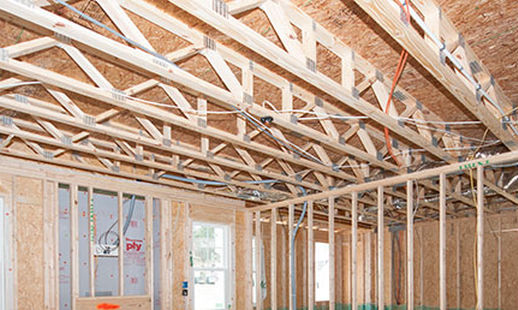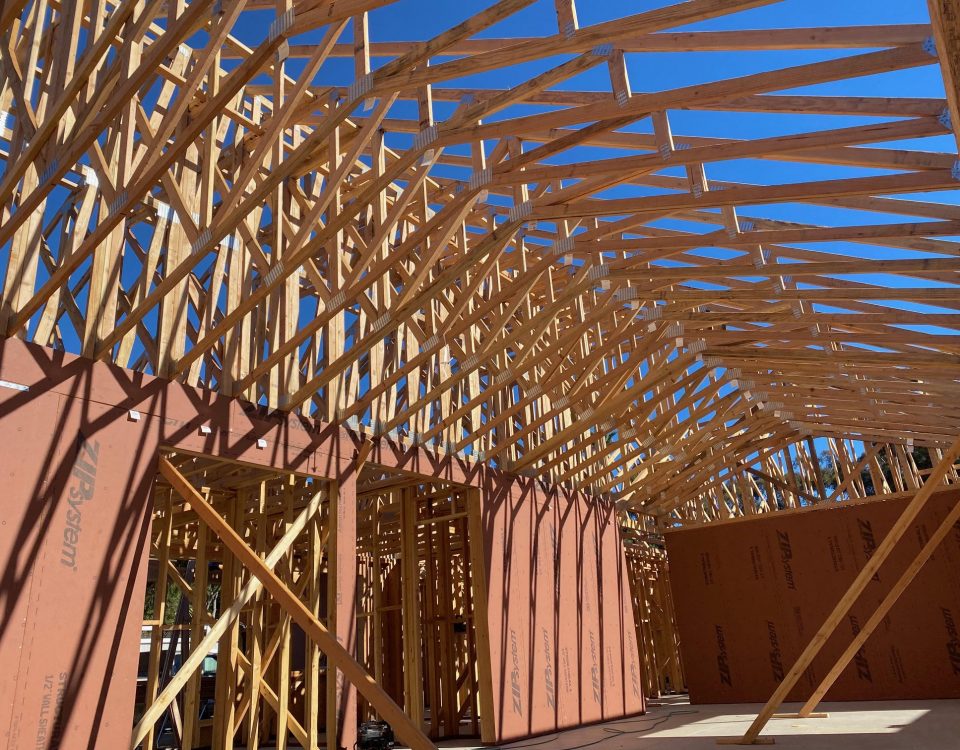How Wooden Trusses Are Made

How Much Weight Can A Roof Truss Hold?
August 31, 2023
The Benefits of Using Floor Trusses Instead of Joists
December 18, 2023Wooden trusses are by far the most popular type of roof structure material in the United States. According to recent sources, about 80 percent of all new housing construction utilizes wood trusses, at least in part, to build strong, functional roofs that incorporates any and all types of architectural styles.
Many builders understand that trusses are an economical approach to construction. However, even the builders who regularly use trusses often have little knowledge about how they are manufactured. How are roof trusses made, and what makes them so strong and durable yet lightweight and easy to install?
The Basics of Roof Truss Construction
Construction of roof trusses begins with the design of the particular truss style. All trusses rely on “force” members which are attached at nodes. The force members are usually the top and bottom chords of the roof truss which are attached in the middle with webbing. Exactly how the truss will be assembled is determined by the particular style the manufacturer wants to create–anything from a “king post” truss to a scissor truss. The members will bear the force, compression and torque that the roof is subjected to, making the truss’s ability to withstand these forces the primary focus of the design, no matter what style is chosen. The nodes are attached with truss plates, which are generally metal plates that are covered in spikes that grip the wood, making the connections strong and durable.
Design of any truss is usually rendered in 3D on a computer. A computer model is made of the final truss design so that the truss manufacturer and contractor can review the design and ensure it is right. After this, the design is downloaded into a software program that operates different types of saws, such as a miter saw or articulating head saw. These saws will cut the wood to the exact specifications of the design.
The wood used in trusses varies from one manufacturer to another, but the most commonly used woods are pine, spruce and douglas fir. The lumber is cut and then lined up using a machine that utilizes computer programs to optimize assembly. The final assembly is then concluded as the machines compress the metal plates to the wood to form a tight bond. The final trusses are checked by quality control to test their strength, precise measurements and other factors.
Once the trusses are completed, they are bundled together to fill orders and are shipped to the job site directly. This aspect of truss manufacturing means that builders can receive their entire order of trusses in a single day, allowing them to quickly complete a framing job when compared to traditional stick-built framing.
If you are a builder who wants to work with a company that produces quality trusses at a fair and reasonable price, give Stone Truss a call! With our decades of experience and state-of-the-art equipment, we can provide you with any size or style of wooden trusses you want. Contact us today and let us start designing your next truss roofing project!


